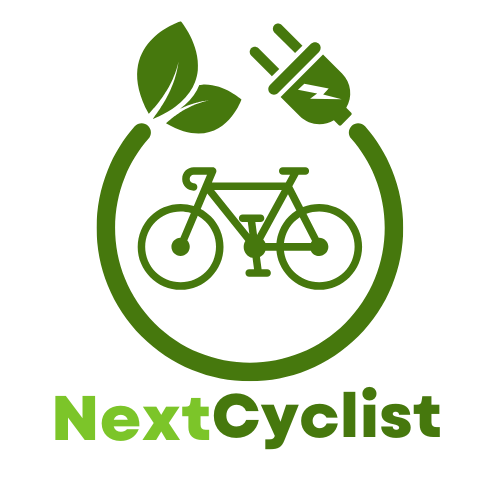Most e-bikes can reach speeds of 25 km/h. Some models may reach up to 45 km/h. The speed varies based on the bike’s design and the motor’s power.
Introduction
If you’re wondering how fast is the e-bike in km/h?, you’re not alone. Many people are curious about the speed capabilities of electric bikes, whether they’re thinking about buying one or just want to ensure they’re getting the most out of their rides. Understanding e-bike speed is key to enjoying your ride and knowing what to expect on the road.
In many cases, it can feel overwhelming sorting through specs and features, and the last thing you want is to be disappointed when you hit that throttle. So, what influences e-bike speed anyway? The good news is that this article will break it all down for you, from average speeds you can anticipate to factors that might speed you up—or slow you down.
By the end, you’ll not only know how fast your e-bike can go but also feel confident in picking out one that suits your riding style. Ready to uncover the facts? Let’s get into it!
TL;DR
- Most e-bikes are limited to 25 km/h for safety; high-performance models can go up to 45 km/h.
- Key factors influencing speed:
- Bike Type: Road e-bikes are generally faster due to lightweight designs.
- Motor Power: Motors range from 250W to 750W; higher wattage equals more speed.
- Speed and Characteristics:
- Standard E-bike: 25 km/h (250-500W)
- High-Performance: Up to 45 km/h (500-750W)
- Road E-bike: 25-35 km/h (250-750W)
- Mountain E-bike: 25-30 km/h (250-750W)
- Other speed influences: Terrain, rider weight, battery charge, tire pressure, and wind resistance matter!
E-Bike Speed Ranges Explained
When considering how fast an ebike can go, it’s important to understand that speed limits and capabilities vary widely. In many regions, most ebikes are limited to a speed of 25 km/h for legal and safety reasons. This makes them a great option for casual riding and commuting in urban areas without attracting too much speed-related attention.
However, if you’re eyeing a more thrilling ride, high-performance models can reach impressive speeds of up to 45 km/h. These bikes typically have more powerful motors and are designed for enthusiasts looking for speed and adrenaline.
Key Factors Influencing E-Bike Speed:
- Bike Type: If you’re venturing into the world of road ebikes, you’ll generally find they are faster than other types like mountain ebikes because of their lightweight frames and streamlined designs.
- Local Regulations: Before hitting the road, it’s crucial to understand your local laws. Different regions have varying regulations for ebike speeds, which can affect where and how you ride.
- Motor Power: The motor’s wattage plays a significant role in determining speed. Most standard ebikes are equipped with motors ranging from 250W to 750W. A more powerful motor will enable you to maintain higher speeds, especially on inclines.
Understanding these factors can help you choose the right ebike for your needs and preferences. If you want to dig deeper into maintenance, don’t forget to check the complete guide to e-bike maintenance for tips on keeping your bike in top shape for speed!
Here’s a simple overview of typical ebike speeds and their characteristics:
| E-Bike Type | Typical Speed (km/h) | Motor Power (W) |
|---|---|---|
| Standard Ebike | 25 | 250 – 500 |
| High-Performance | Up to 45 | 500 – 750 |
| Road Ebike | 25 – 35 | 250 – 750 |
| Mountain Ebike | 25 – 30 | 250 – 750 |
This table clearly illustrates the variations in speed across different ebike types and can help you make an informed decision when purchasing or upgrading your electric bike.
Factors Affecting E-Bike Speeds
E-bikes offer a fantastic way to get around, but various factors can impact how fast your e-bike travels. Understanding these elements can help you make the most of your ride. Here are the key factors affecting e-bike speeds, so you can optimize your performance and enjoy a smoother journey.
Terrain: Flat surfaces allow for higher speeds compared to hills.
When riding on flat terrain, your e-bike can reach its maximum speed more easily. Hills present a challenge that can slow you down significantly. If you know you’ll be tackling steep inclines, consider choosing a route with fewer hills or using lower gears to maintain a steady pace.
Rider weight: Heavier riders may experience slower speeds.
Your weight plays a substantial role in how fast your e-bike can go. Lighter riders typically find it easier to achieve higher speeds. If you’re on the heavier side, try to reduce any unnecessary gear or cargo. This can help you gain a little extra speed without sacrificing comfort.
Battery charge: A full battery ensures optimal performance.
A fully charged battery is crucial for getting the best speed from your e-bike. As the charge depletes, the motor’s support decreases, which can lead to slower speeds. Always make sure to charge your battery before longer rides to enjoy peak performance.
Tire pressure: Properly inflated tires improve speed and efficiency.
Tire pressure affects your e-bike’s performance significantly. Tires that are properly inflated reduce rolling resistance, helping you reach higher speeds more efficiently. Check your tire pressure regularly and inflate them to the recommended levels found on the tire’s sidewall.
Wind resistance: Riding against strong winds can reduce speed.
Wind is one of the few natural elements that can slow down your e-bike ride. Strong headwinds create resistance, forcing you to put in more effort. If you can, plan your routes to include less exposed areas, especially when riding in windy conditions.
| Factor | Impact on Speed | Tip |
|---|---|---|
| Terrain | High impact; prepare for hills | Choose flatter routes for optimal speed |
| Rider Weight | Decreases speed for heavier riders | Minimize extra weight when possible |
| Battery Charge | Essential for maintaining speed | Always start with a full charge |
| Tire Pressure | Crucial for efficiency | Keep tires at recommended pressure levels |
| Wind Resistance | Can significantly slow you down | Try avoiding open areas on windy days |
By keeping these factors in mind, you can maximize the speed and efficiency of your e-bike rides, making your journeys both enjoyable and fast.
To sum it all up, understanding how fast your e-bike can go is key to enjoying your rides and making informed decisions when choosing an electric bike. We’ve covered vital points, like the average speeds of 25 km/h for most city bikes and up to 45 km/h for high-performance models, along with factors like terrain, rider weight, and battery charge that can impact those speeds.
Now, don’t let this information sit idle! Take action by checking out our complete guide on e-bike maintenance to keep your bike in top shape, or reach out to us with any questions you might have. Your next adventure awaits, so let’s get riding!

